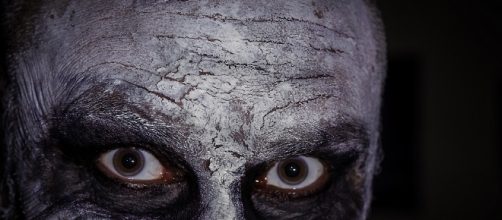Whether you get your news primarily from local TV affiliates or from social media, you’ve probably been hearing for a few months about “clown sightings,” or their even more frightening cousin, “Killer clowns.” The story goes that in various, mostly rural areas of the United States clowns, or people dressed as them, are lurking in the woods and scaring people, sometimes with the threat of violence.
The Great Clown Panic of 2016 has especially proliferated in recent weeks, with various ancillary stories related to the “clown threat,” from high school students getting caught calling in bogus clown-related threats to vigilantes actually taking up arms against what they believe are clowns.
And it seems likely to get even worse, especially as we get closer to Halloween.
But let’s get real: There is no clown threat, because there’s no such thing as killer clowns. There have been some documented cases of people dressing up as clowns and scaring people, but in most cases, those aren't threats- they're pranks.
It's important for media outlets, traditional and online, to be very meticulous about knowing the difference.
Origin of the Clowns
Let’s get one thing out of the way first: “Killer clowns” aren’t real.Many, many“clown sightings” in recent months are backed by no evidence whatsoever and turn out to be hoaxes or, at best, pranks. Once in awhile there’s a grainy video of a “clown,” but all it takes to fake those is a crude costume and a smartphone camera.
And while there have been a small handful of arrests of people who committed crimes while wearing full or partial clown costumes, they're not all violent and mostly don'tfit the profile of a scary predator in the bushes. And, of course, none of the "killer clowns" have killed anyone.
Meanwhile, there have been many, many more cases this year of people arrested for clown-related threats and hoaxes.And the more this makes the news, the more likely copycats - probably as some sort of Halloween prank- will try it out themselves.Alternative explanations state that the “clowns” have something to do with one of this year's political campaigns, or that they’re some type of guerrilla marketing stunt for an upcoming horror movie.
This has all the markings of a media-fueled moral panic, in the tradition of “Satanic ritual abuse” in the 1980s, “rainbow parties” in the early 2000s, or the “Knockout Game” in late 2013. Like these things, the clown appearances appear to be based, roughly, ina handful of true examples- but it’s falsely treated as a national, scary trend- leading to consequences considerably worse than the original threat.
As pointed out by Rolling Stone, there was another “creepy clown epidemic” in the early 1990s, throughout New England. But none of that was ever really substantiated either.
“Clowns” have consequences
Law enforcement agencies, including the Pennsylvania State Police, have said that the clown panic is “unfounded.” But the breathless reporting of clowns everywhere has potential to actually get people hurt. A 13-year-old girl in Philadelphia was caught this week making clown-related threats on social media. A man in Kentucky the other day fired an AR-15 in the air to scare off a “clown” that turned out to be a woman walking her dog, the Bardstown Police Department said.
At Penn State this week, a mob of over 500 students set out to go after “clowns” that had reportedly been seen on campus; if only that particular university showed such vigilance when it came toactual predators.
Sooner or later, someone on a wild goose chase for “clowns” is going to kill someone.
Once again, there probably really have been some people dressed as clowns making appearances throughout America. But they're not killers, they're (in nearly every case) not violent, and the reactions to them are much more likely to lead to bad consequences than the clowns themselves ever have.

